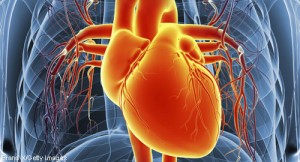 ACR CONVERGENCE 2020—Patients with idiopathic inflammatory myopathies, including polymyositis (PM), dermatomyositis (DM), inclusion body myositis and juvenile DM, experience inflammation of skeletal muscles that leads to muscle weakness. Although clinically significant heart involvement is uncommon in these patients, recent studies show an increased prevalence of traditional cardiovascular risk factors associated with both juvenile and adult DM and PM. Example: The risk of developing atherosclerotic coronary artery disease is increased two- to fourfold in patients with DM or PM.1,2
ACR CONVERGENCE 2020—Patients with idiopathic inflammatory myopathies, including polymyositis (PM), dermatomyositis (DM), inclusion body myositis and juvenile DM, experience inflammation of skeletal muscles that leads to muscle weakness. Although clinically significant heart involvement is uncommon in these patients, recent studies show an increased prevalence of traditional cardiovascular risk factors associated with both juvenile and adult DM and PM. Example: The risk of developing atherosclerotic coronary artery disease is increased two- to fourfold in patients with DM or PM.1,2
In the ACR Convergence 2020 session titled, Myositis: Getting to the Heart, Louise P. Diederichsen, MD, PhD, discussed emerging methods for diagnosing myocarditis and identified myositis-related autoantibodies that may be associated with myocarditis and cardiomyopathy in idiopathic inflammatory myopathies.
Sammy Zakaria, MD, MPH, a cardiologist with an interest in the cardiac manifestations of rheumatic disease, then shared his perspective on the management of cardiac myositis, which included traditional risk factors, when to refer to a cardiologist and a suggested patient evaluation.
Autoantibodies & the Heart in Myositis
Dr. Diederichsen, an associate professor and consultant at Copenhagen University Hospital, Rigshospitalet, Denmark, is conducting research on how myositis affects the cardiovascular system. She began her presentation by describing two key mechanisms of heart disease in myositis: accelerated atherosclerosis of the coronary arteries and inflammation of the myocardium (i.e., myocarditis).
Atherosclerosis caused by a plaque comprising fat, calcium and cholesterol can be identified using coronary angiography and cardiac computed tomography (CT) scan. A large body of evidence indicates the risk of coronary artery disease is increased in patients with myositis.
A 2015 study conducted by Dr. Diederichsen and colleagues investigated coronary artery disease in myositis patients. This cross-sectional study included 76 patients with PM/DM and 48 healthy controls, and coronary artery calcification was measured using CT scan. Researchers found high calcification in patients with PM/DM, at a rate of 20% compared with 4% in healthy controls. They also noted some myositis patients had several comorbidities, including obesity, hypertension and diabetes.3
Moving on to discuss diagnosis, Dr. Diederichsen noted myocarditis can be identified through endomyocardial biopsy, which is considered the gold standard. The disease can also be identified with cardiac magnetic resonance imaging (MRI), which can identify morphological abnormalities, such as tissue characterization of the pericardium and myocardium, as well as functional abnormalities, such as left ventricular ejection fraction.
Dr. Diederichsen next defined two different types of cardiac MRI used to identify myocardial inflammation and fibrosis: conventional cardiac MRI, with gadolinium-enhanced T1-weighted images used to see fibrosis; and T2-weighted images used to see edema and inflammation. New and developing cardiac MRI mapping techniques quantify myocardial relaxation times, T1 mapping/extracellular volume quantifies diffuse myocardial inflammation and fibrosis, and T2 mapping quantifies myocardial edema and inflammation.


